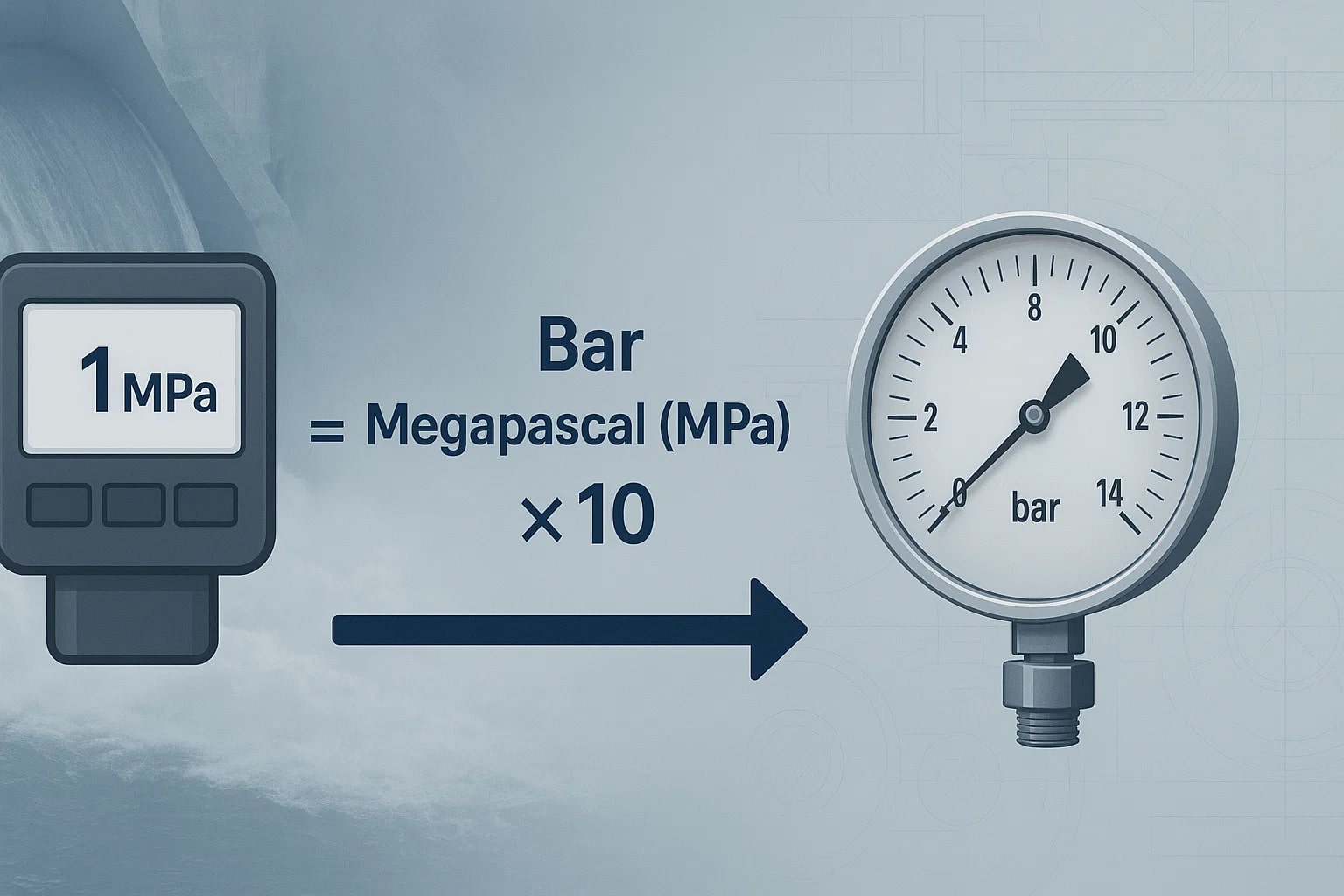megapascal to bar – How to convert MPa to bar
In engineering, pressure is often expressed in megapascal (MPa), while industries such as hydraulics and automotive design still use the bar. Converting megapascal to bar is a common step in technical fields, ensuring measurements align across different systems and equipment standards.
What is a megapascal (MPa)?
A megapascal equals one million pascals, or one million newtons per square meter. It is an SI unit widely used in structural engineering, material science, and hydraulics to measure very high pressures.
What is a bar?
A bar is a metric unit of pressure, defined as 100,000 pascals. While not an SI unit, it remains widely used in industries such as tire manufacturing, scuba diving, and fluid systems. One bar is slightly less than atmospheric pressure at sea level (1.013 bar).
How to convert megapascal to bar
Bar = Megapascal (MPa) × 10
Example:Bar = 5 MPa × 10 = 50 bar

For quick results without manual calculation, use the Conversion Tools. You’ll also find other useful tools like the Speed Converter for related unit changes.
Do you know?
-
About megapascal: Modern hydraulic presses can easily exert forces exceeding 30 MPa — that’s 300 bar of pressure applied to shape metals.
-
About bar: Scuba divers often monitor air tank pressure in bar. A full tank typically holds around 200 bar, which equals 20 MPa.
The Hoover Dam and Pressure Engineering
When the Hoover Dam was constructed in the 1930s, one of the engineering challenges was managing the enormous water pressure behind the dam wall. Though measurements then were often recorded in psi, today they would translate to tens of MPa. For example, at the base of the dam, water exerts around 1 MPa, equivalent to 10 bar.
This conversion between units is crucial in engineering projects. Calculations in MPa give engineers precision, while bar is practical for gauges and instruments used by operators. Without such clarity, large-scale infrastructure projects like dams, pipelines, and power plants would be far riskier to build and maintain.

Precision That Powers Industry
Converting megapascal to bar is more than math — it keeps engineers, manufacturers, and operators aligned. With a simple multiplication by 10, high-level SI units become practical values on gauges, manuals, and safety charts. From the Hoover Dam to scuba tanks, this conversion ensures that pressure is not only calculated but also controlled safely in the real world.

